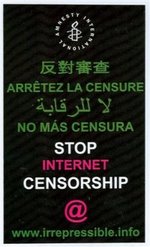The depiction of man and woman in language and
through language
(Γλώσσα και φύλο)
(Γλώσσα και φύλο)
Η Ομάδα Κοινωνικής
Ανθρωπολογίας στην οποία συμμετέχω εδώ και 22 χρόνια είχε διοργανώσει ημερίδα
με θέμα «Παρελθόν και μέλλον της ανισότητας των φύλων», που έγινε στο Πάντειο
Πανεπιστήμιο το Σάββατο 16 Μάη 1998. Πρόθεσή μου ήταν να γράψω ένα κείμενο για
την απεικόνιση του άνδρα και της γυναίκας στη γλώσσα και μέσω της γλώσσας. Η
κινέζικη γλώσσα πρόσφερε αρκετό υλικό. Είχα μάλιστα ξεκινήσει να γράφω. Τελικά
μια παρόμοια εισήγηση πρότεινε να κάνει η φίλη Κάτια Μαρινάκη, γιαπωνεζομαθής
αυτή. Ως κρητικός ιππότης της παραχώρησα την προτεραιότητα και έκανα άλλη
εισήγηση με τίτλο: «Η τιμωρία της μοιχαλίδας στο ευρωπαϊκό μυθιστόρημα». Τα
πρακτικά δημοσιεύτηκαν σε ξεχωριστό τόμο που εκδόθηκε από τις εκδόσεις
Σαββάλας.
Το κείμενο το είχα ξεχάσει
εντελώς. Τελικά ψάχνοντας σε κάτι back up το ανακάλυψα τυχαία. Το είχα γράψει
στα αγγλικά, φαντάζομαι γιατί οι μεταφράσεις των κινέζικων λέξεων έγιναν από
κινεζοαγγλικό λεξικό. Το κινεζοελληνικό του δασκάλου μου του Τσου Σενπεν δεν
είχε κυκλοφορήσει ακόμη. Ίσως να σκόπευα να το δημοσιεύσω και στο ηλεκτρονικό
περιοδικό «Comparative Literature and Culture Webjournal», όπου τελικά
δημοσιεύτηκε η εισήγηση που έκανα με τον τίτλο «Some observations about the
Suicide of the Adulteress in the Modern Novel». Δημοσιεύτηκε τον Ιούνιο του
1999.
Τελικά, μια και
βοηθάει η εξέλιξη της τεχνολογίας, είπα να το αναρτήσω, αφού πρόσθεσα και τις
ξένες λέξεις στην πραγματική τους γραφή και όχι με λατινικούς χαρακτήρες. Το
ανάρτησα στο Λέξημα, και είδα ότι δεν μου πέρασαν οι ρώσικοι χαρακτήρες,
πέρασαν όμως οι κινέζικοι. Να δούμε στο blog. Για να επεξεργαστώ το θέμα
παραπέρα αποκλείεται. Μπορεί όμως κάποιος που δουλεύει ανάλογο θέμα να το βρει
χρήσιμο και να το χρησιμοποιήσει. Και, σήμερα πια, μόνο στο διαδίκτυο μπορείς
να βρεις κάτι στα γρήγορα. Ό,τι άλλο ψάχνεις είναι ψύλλοι στα άχυρα. Γι’ αυτό
αποφάσισα να το αναρτήσω.
The depiction of man and woman in language and
through language.
The stand of various beings, as well as human
beings, is mirrored in many areas of superstructure, for example in law, in
art, in literature, in religion. This is a truism, and a lot of research has
been undertaken οn this
field. In our exposition we shall investigate the way man and woman are
depicted in language.
On the other hand, the way a man or a woman
uses language is sometimes very characteristic of their sex. Society puts
certain demands on how one is permitted to use the language.
A.
Depiction in language
Ferdinand de Saussure has assured that
language is an arbitrary sign system, not conditioned. That means that there is
no logical ground why the English should choose the word «cat» to denote the
idea of this animal any more than the Greek should choose the word γάτα and the Japanese the word ike.
Despite that, the derivation of certain words, with the connotations emanating
from them, may prove a fruitful source of inspiration as to the attitude people
have about things signified by them.
1. Let’s take first «woman», as depicted in
various languages. The word γυναίκα is derived from the word γεννώ. The word жена
in Russian is a possible derivation from the Greek γεννώ. In czech we have also the
word zena. The same thing must be in other slavonic langages as well. That
means that in the representational system of these people woman is primarily
the one who gives birth to the children, the one who cares, or is more
responsible, for the procreation of humanity.
2. The words for man, άνδρας in Greek and муж in Russian, on the other hand,
stand on their own.
In English the word for man, deriving from
the latin adjective of homo, humanus, stand for all human beings, both men and
women, when there is no need to make a distinction of the sex. In English
especially it is quite indicative that the word «woman» is a derivative of the
word «man», formed with the addition of the prefix «wo» to the word «man»,
quite proportionate to the myth of human generation found in the Bible. She is
evidently like a planet going round the sun-man, completely dependent on him.
Isn’t woman constantly «woo-ing» him, trying with an excess of cosmetics to
draw his attention?» (We mean it as wordplay, of course).
There is still a stronger indication that
«man» stands for human beings collectively, the word «mankind». The Germans
respectively have the word «Manschaft». The languages originating from Latin
also use the word for man (Homme, uomo, hombre, coming from homo) in the sense
both of man and human being. The same languages still use the Latin adjective
to denote mankind: humanité, umanita, umanidad, the English word «humanity»
being a loan from them. The same thing applies in Greek with the word ανθρωπότης.
New Greek seems to be an exception, using the
word άνδρας to denote
only the male. However, even today the word παιδί (child) is widely used in the country to
denote «boy». It is said, for example, of a family having two παιδιά and two κορίτσια, meaning two boys and two girls.
3. From the derivations and denotations let’s
pass to metaphorical uses and connotations. The word «manly» stands almost in
all western languages for bravery: ανδρείoς, mannhaft, мужественный. Manhood is a synonym for «bravery». In French there is the
metaphorical expression «Il a agit en homme», he acted like a man, that is
bravely. On the contrary womanly means cowardice.
4. The linguistic indications of how man and
woman are depicted in ideogrammatic languages is far richer, since these
languages form their words using a limited number of basic ideograms and even
fewer radicals, always containing meaning. We will examine the Chinese and
Japanese language. Many of the Chinese ideograms have passed into the Japanese
language as «kanjis».
In the Oxford English-Chinese and
Chinese-English dictionary, the 18th radical 人 denotes «man» and the 65th 女 denotes
«woman». From these radicals the «woman» radical is used in quite a lot of
ideograms.
Quite characteristic is the ideogram
«an» 安
which is formed by the radical denoting roof and underneath the radical
denoting woman. Its basic meanings are tranquility and the similar (calm,
quietness, etc.) satisfaction and safety. In composition we have similar words
like anfu, 安抚 console, anjia, 安家settle, anding, 安定stable,
anhao 安好, safe and sound, anjing 安静, quiet, peaceful, anning 安宁, tranquil, anquan 安全, safe, anran 安然, safely,
anshen 安身, take shelter, anwei 安慰 comfort, anxin 安心, feel at ease, etc.
5. Other ideograms used to depict words
associated with man and woman are also indicative.
The ancient Chinese word jianei, 家内denoting
wife, has passed in Japanese, pronounced kanai. The first ideogram denotes
house and the second denotes inside.
6. The ideograms for woman 女 and boy 子
taken together 女子, mean
«woman». (In reverse order they mean «boy and girl, children»). Taken in close
composition 好 (hao) they mean «good». It seems that the quality of goodness is
considered by the Chinese a woman attribute, in contrast to the man who is
usually aggressive and ferocious, attributes demanded from him by the
community, quite necessary for its survival, especially in primitive times.
7. The
similarity between the ideograms denoting man 男and braveness 勇,both in
Japanese and in Chinese, may not be accidental.
In summary, the main manly attribute is
bravery and the main womanly attribute is peacefulness.








No comments:
Post a Comment